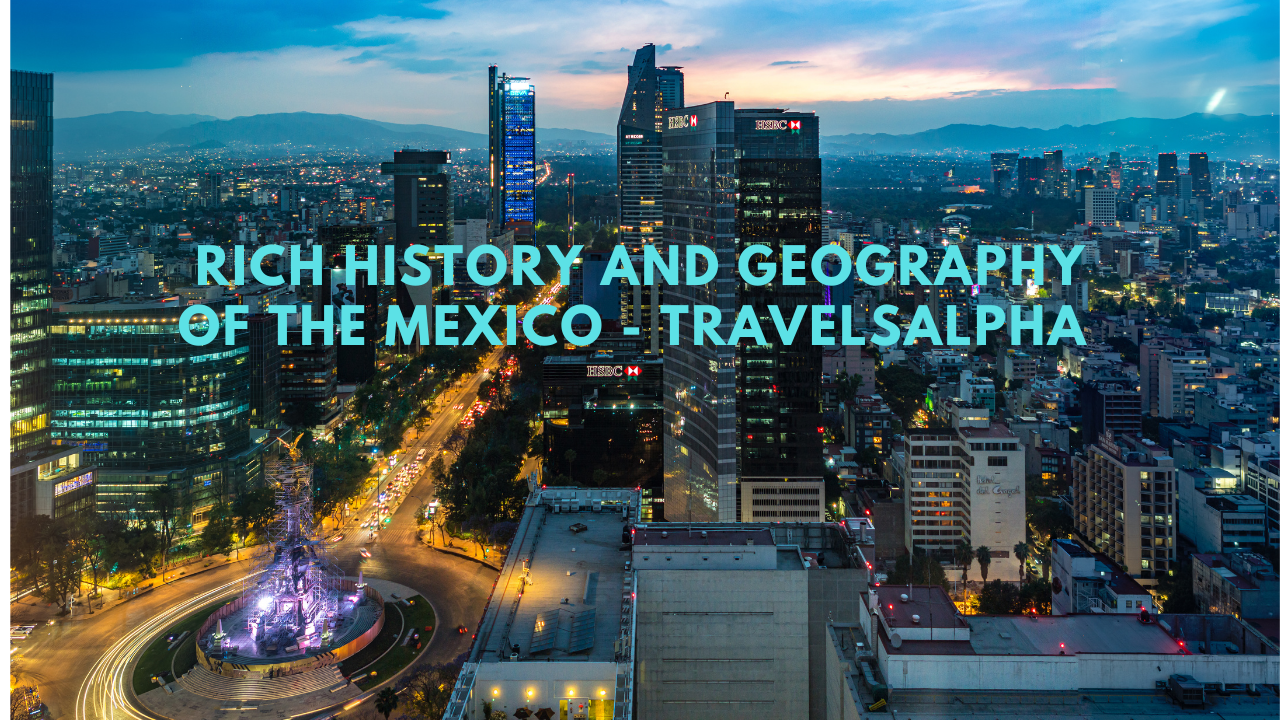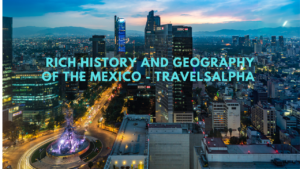Mexico is a country with a fascinating history, diverse cultures, and dynamic geography. The study of Mexico’s map reveals much about its past and how its territories, borders, and demographics have evolved over time. This blog will explore the history, geography, and importance of the Mexico map, with additional focus on how it continues to influence the country’s identity.
Table of Contents:
- Introduction to the Mexico Map
- Ancient Cartography and Early Maps of Mexico
- Evolution of the Modern Mexico Map
- Key Geographic Features on a Mexico Map
- Political Borders and Regional Divisions
- The Importance of Maps of Mexico in Travel and Navigation
- Conclusion
1. Introduction to the Mexico Map
Mexico’s map is not only a visual representation of its geography but also a gateway to understanding its historical and cultural significance. From its vast deserts and mountain ranges to its bustling urban centers and coastal areas, maps of Mexico serve multiple purposes—from aiding navigation to offering a snapshot of its evolving political landscape.
The Mexico map can also be used for many purposes, such as:
- Travel and navigation for tourists
- Concentrating on topographical highlights like mountains and streams
- Understanding the historical division of states and territories
- Political mapping to highlight borders and regions
Maps of Mexico can be accessed in digital and physical formats, making them widely available for various uses, both educational and practical.
2. Ancient Cartography and Early Maps of Mexico
Before the arrival of European settlers, the indigenous peoples of Mexico, including the Maya and Aztecs, created their own forms of mapping. These early forms of Mexican maps weren’t only geographical but also spiritual and cosmological.
Key Aspects of Ancient Mexican Maps:
- Codices: Early depictions of lands, cities, and sacred spaces
- Pictograms: Visual symbols representing towns, rivers, and territories
- Social Importance: Guides mirrored the social and strict request of the human progress
The most famous early map is the Nahua Map (also known as the Codex Mendoza), which provides insight into early Aztec society.
3. Evolution of the Modern Mexico Map
As European explorers began arriving in the 16th century, Mexico’s map was redefined with colonial interests in mind. These new maps emphasized trade routes, the division of territories, and new political boundaries.
Achievements in the Improvement of the Advanced Mexico Guide:
- 1520s: Spanish colonizers begin charting the territory
- 1821: Mexico gains independence, and new borders are drawn
- 1848: The Treaty of Guadalupe Hidalgo redefines the northern boundary of Mexico after the Mexican-American War
Listing: Key Historical Maps of Mexico
- Codex Mendoza (Pre-Columbian Era)
- Spanish Colonial Maps (16th Century)
- Independence Era Maps (1820s)
- Post-Treaty Maps (1848)
4. Key Geographic Features on a Mexico Map
Mexico’s geography is as diverse as its culture. The Mexico map highlights a variety of natural features, each contributing to its unique environment.
Topographical Features of Mexico:
- Sierra Madre Occidental and Sierra Madre Oriental mountain ranges
- Yucatán Peninsula with its tropical forests and ancient ruins
- Chihuahua Desert in the north
- Baja California Peninsula stretching along the Pacific Ocean
- Focal Mexican Level, home to the nation’s capital
Table: Major Geographic Features on a Mexico Map
| Feature | Location | Importance |
|---|---|---|
| Sierra Madre Occidental | Western Mexico | Major mountain range |
| Yucatán Peninsula | Southeastern Mexico | Rich in Mayan history |
| Chihuahua Desert | Northern Mexico | Largest desert in Mexico |
| Baja California Peninsula | Western Mexico | Coastal desert, popular for tourism |
| Central Mexican Plateau | Central Mexico | Heartland of Mexican culture and home to Mexico City |
For those interested in exploring Mexico’s vast geography further, check out our comprehensive guide to Mexican travel destinations.
5. Political Borders and Regional Divisions
One of the most significant aspects of the Mexico map is the division of its 32 federal entities, which include 31 states and one federal district (Mexico City). Each state has unique geographic, cultural, and political characteristics.
Key States and Regions on the Mexico Map:
- Mexico City: The capital, located at the heart of the country
- Jalisco: Known for being the origination of Mariachi and Tequila
- Yucatán: A center of ancient Mayan civilization
- Sonora: A large northern state, known for its deserts
The political map of Mexico has changed over time, particularly in terms of its northern borders after losing territory to the U.S. in the 19th century. Understanding the current political boundaries is crucial for comprehending regional identity and economic activities.
6. The Importance of Maps of Mexico in Travel and Navigation
A Mexico map serves as an essential tool for travelers exploring the country’s diverse landscapes. From the beaches of Cancún to the ancient pyramids of Teotihuacán, understanding the geography is key to making the most of your journey.
Benefits of Using Maps in Travel:
- Helps navigate Mexico’s cities and rural areas
- Provides context for the location of tourist sites
- Aids in planning road trips through the country’s vast regions
- Allows tourists to explore natural wonders, such as waterfalls and cenotes
If you’re planning a trip, you can use our detailed travel map of Mexico to plan your itinerary with ease.
7. Conclusion
The Mexico map is not just a static image; it is a dynamic reflection of the country’s past and present. From its indigenous roots to its modern boundaries, maps have played a crucial role in shaping Mexico’s identity. Whether for travel, education, or understanding geopolitical changes, the map of Mexico remains a vital resource for exploring this vibrant nation.
For a deeper look into Mexico’s regional cultures and their historical influences, be sure to visit our article on The Cultural Significance of Mexican States.
More Blogs to Read:
Best Places to Travel in November: Unveiling the Top Destinations for a Perfect Autumn Escape
Little Bangkok: A Hidden Gem of Cultural Richness and Vibrant Experiences
Lan Larb Chiang Mai: A Culinary Adventure in Thailand’s Cultural Capital
By utilizing this detailed exploration of the Mexico map, you gain an appreciation for the country’s geographic diversity, political boundaries, and historical evolution. Whether you’re a traveler, student, or history enthusiast, maps of Mexico serve as both practical tools and educational resources.




Leave a reply